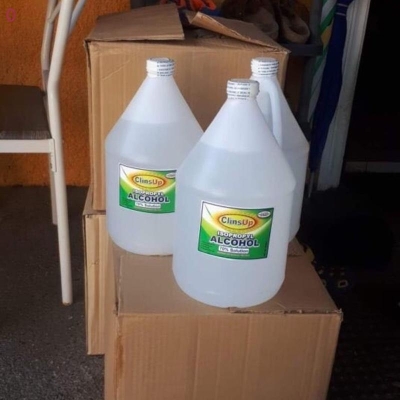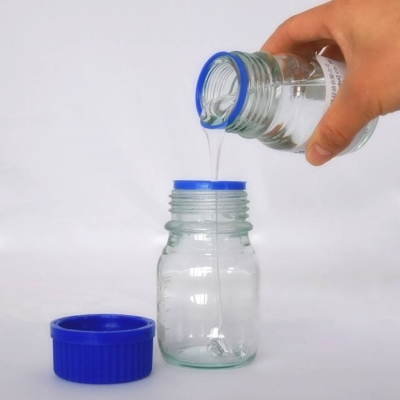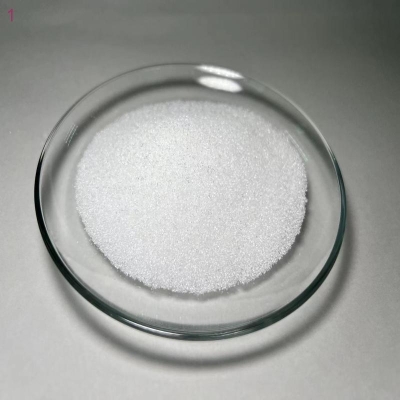-
Categories
-
Pharmaceutical Intermediates
-
Active Pharmaceutical Ingredients
-
Food Additives
- Industrial Coatings
- Agrochemicals
- Dyes and Pigments
- Surfactant
- Flavors and Fragrances
- Chemical Reagents
- Catalyst and Auxiliary
- Natural Products
- Inorganic Chemistry
-
Organic Chemistry
-
Biochemical Engineering
- Analytical Chemistry
-
Cosmetic Ingredient
- Water Treatment Chemical
-
Pharmaceutical Intermediates
Promotion
ECHEMI Mall
Wholesale
Weekly Price
Exhibition
News
-
Trade Service
[ Focus on Chemical Machinery Equipment Network ] Plastics are polymer compounds that are polymerized from monomers as raw materials through addition polymerization or polycondensation reactions, and are composed of synthetic resins and fillers, plasticizers, stabilizers, lubricants, pigments and other additives Composition
.
Since the birth of plastics, humans have used plastics for more than a hundred years, ranging from daily shopping to industrial production.
Plastics can be described as ubiquitous
.
However, while enjoying the many conveniences that plastics bring to our production and life, the "white pollution" caused by a large amount of waste plastics has caused considerable pressure on the environment
.
Chemical machinery and equipment network hotspots pay attention to chemical machinery and equipment.
Since the birth of plastics, humans have used plastics for more than a hundred years, ranging from daily shopping to industrial production.
Plastics can be described as ubiquitous
.
However, while enjoying the many conveniences that plastics bring to our production and life, the "white pollution" caused by a large amount of waste plastics has caused considerable pressure on the environment
.
In daily life, the disposal of the garbage that is visible to the naked eye is generally carried out by incineration, landfill, and microbial degradation
.
However, according to incomplete statistics, more than 8 million tons of plastic are discarded in the ocean every year after removing these processed garbage
.
The garbage that enters the ocean will be dispersed into countless plastic particles after being decomposed by nature
.
The National Oceanic and Atmospheric Administration (NOAA) defines plastic particles as plastic blocks with a diameter of less than 5 millimeters
.
These plastic particles, which are hard to detect by the naked eye, accumulate in the sea water and enter the organism as the ecosystem drifts and circulates, affecting the stability of the ecosystem
.
In addition, these microplastics will spread through the food chain and flow into the human table, posing a potential threat to the human body
.
Therefore, timely management and control of marine microplastics is extremely urgent
.
.
However, according to incomplete statistics, more than 8 million tons of plastic are discarded in the ocean every year after removing these processed garbage
.
The garbage that enters the ocean will be dispersed into countless plastic particles after being decomposed by nature
.
The National Oceanic and Atmospheric Administration (NOAA) defines plastic particles as plastic blocks with a diameter of less than 5 millimeters
.
These plastic particles, which are hard to detect by the naked eye, accumulate in the sea water and enter the organism as the ecosystem drifts and circulates, affecting the stability of the ecosystem
.
In addition, these microplastics will spread through the food chain and flow into the human table, posing a potential threat to the human body
.
Therefore, timely management and control of marine microplastics is extremely urgent
.
In fact, scientists in the field of marine environment have long conducted in-depth research on microplastics and have accumulated rich experience in continuous exploration
.
At present, the detection and analysis of conventional marine microplastics are generally carried out in the laboratory with the help of advanced equipment
.
For example, the research team of Jennifer Brandon, a biological oceanographer at the Scripps Institute of Oceanography at the University of California, San Diego, used a polycarbonate filter with a pore size of only 5 microns to filter the seawater when studying microplastics in seawater.
Use a special fluorescence microscope to observe
.
Detection and analysis revealed that the number of plastic particles per cubic meter of seawater is as high as 8.
3 million, which is tens of thousands or even millions of times the previous measurement data.
The results are jaw-dropping
.
filter.
At present, the detection and analysis of conventional marine microplastics are generally carried out in the laboratory with the help of advanced equipment
.
For example, the research team of Jennifer Brandon, a biological oceanographer at the Scripps Institute of Oceanography at the University of California, San Diego, used a polycarbonate filter with a pore size of only 5 microns to filter the seawater when studying microplastics in seawater.
Use a special fluorescence microscope to observe
.
Detection and analysis revealed that the number of plastic particles per cubic meter of seawater is as high as 8.
3 million, which is tens of thousands or even millions of times the previous measurement data.
The results are jaw-dropping
.
In addition to polycarbonate filters and fluorescence microscopes that can "capture" microplastics in seawater, PerkinElmer's infrared microscope imaging system can also detect and identify microplastics
.
The detection process is: the collected seawater samples undergo a series of pre-treatments to remove organic matter, then filter them with a filter membrane and dry them in the air to obtain the sample to be tested, and then use the infrared microscope imaging system to select the sample area and scan, and then scan the obtained Infrared imaging data is analyzed by infrared spectroscopy and compared with the standard spectra of plastic components to obtain the microplastics contained in the seawater sample
.
.
The detection process is: the collected seawater samples undergo a series of pre-treatments to remove organic matter, then filter them with a filter membrane and dry them in the air to obtain the sample to be tested, and then use the infrared microscope imaging system to select the sample area and scan, and then scan the obtained Infrared imaging data is analyzed by infrared spectroscopy and compared with the standard spectra of plastic components to obtain the microplastics contained in the seawater sample
.
In order to shorten the inspection cycle and save manpower and material resources, Agilent has developed and produced a focal plane infrared imaging system.
This technology can shorten the inspection task that can be completed within a week to one hour and improve the efficiency of experimental operations
.
In addition, the traditional detection of microplastics mostly focuses on qualitative and quantitative research, and the operation process is complicated and the amount of statistics is large
.
To solve these problems, Agilent and the Jes Vollertsen team of Aalborg University in Denmark developed a MPhunter software
.
This software can perform fully automatic qualitative and quantitative analysis of microplastics, and obtain information such as the size and volume of each particle, which is convenient and quick
.
This technology can shorten the inspection task that can be completed within a week to one hour and improve the efficiency of experimental operations
.
In addition, the traditional detection of microplastics mostly focuses on qualitative and quantitative research, and the operation process is complicated and the amount of statistics is large
.
To solve these problems, Agilent and the Jes Vollertsen team of Aalborg University in Denmark developed a MPhunter software
.
This software can perform fully automatic qualitative and quantitative analysis of microplastics, and obtain information such as the size and volume of each particle, which is convenient and quick
.
Thanks to the advancement of science and technology, the treatment of plastic waste is in full swing
.
In fact, the essence of "white pollution" and marine microplastic pollution lies in human abuse and littering
.
"To protect the ocean is to protect human beings" is not alarmist.
Each of us should start from ourselves, protect the ecological environment, and contribute to the sustainable development of the earth!
.
In fact, the essence of "white pollution" and marine microplastic pollution lies in human abuse and littering
.
"To protect the ocean is to protect human beings" is not alarmist.
Each of us should start from ourselves, protect the ecological environment, and contribute to the sustainable development of the earth!
Original title: Ocean micro plastic difficult to detect detector is coping well and
Detector 






